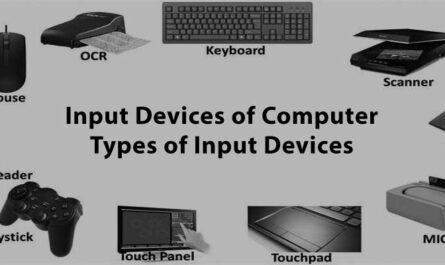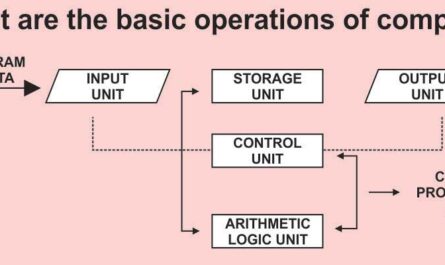You know that the revolution of computers started from the 16th century and resulted in the form that we see today. The present day computer, however, has also undergone rapid change during the last fifty years.
This period, during which the evolution of computers took place, can be divided into five distinct phases known as Generations of Computers. Each phase is distinguished from others on the basis of the type of switching circuits used.
1st-First Generation Computer
First generation computers used Vacuum Tube. These computers were large in size and writing programs on them was difficult. Some of the computers of this generation were:
ENIAC :
It was the first electronic computer built in 1946 at University of Pennsylvania, USA by John Eckert and John Mauchly.It was named Electronic Numerical Integrator and Calculator (ENIAC). 1.
The ENIAC was 30-50 feet long, weighed 30 tons, contained 18,000 vacuum tubes, 70,000 registers, 10,000 capacitors and required 150,000 watts of electricity.
Today your favorite computer is many times as powerful as ENIAC, still size is very small.
EDVAC :
It stands for Electronic Discrete Variable Automatic Computer and was developed in 1950. The concept of storing data and instructions inside the computer was introduced here. This allowed much faster operation since the computer had rapid access to both data and instructions. The other advantage of storing instructions was that computers could make logical decisions internally.
Other Important Computers of First Generation EDSAC: It stands for Electronic Delay Storage Automatic Computer and was developed by M.V. Wilkes at Cambridge University in 1949. UNIVAC-1: Eckert and Mauchly produced it in 1951 by Universal Accounting Computer setup.
Limitations of First Generation Computer
Followings are the major drawbacks of First generation computers.
1. The operating speed was quite slow.
2. Power consumption was very high.
3.It required a large space for installation.
4. The programming capability was quite low.
2. 2nd-Second Generation Computers Around
1955 a device called Transistor replaced the bulky vacuum tubes in the first generation computer. Transistors are smaller than electric tubes and have higher operating speed. It has no filament and requires no heating. Manufacturing cost was also very low. Thus the size of the computer got reduced considerably. It is in the second generation that the concept of Central Processing Unit (CPU), memory, programming language and input and output units were developed.
The programming languages such as COBOL, FORTRAN were developed during this period. Some of the computers of the Second Generation were IBM 1620: Its size was smaller as compared to First Generation computers and mostly used for scientific purposes. IBM 1401: Its size was small to medium and was used for business applications. CDC 3600: Its size was large and was used for scientific purposes.
3. 3rd Third-Generation of Computer
The third generation computers were introduced in 1964. In these computers were used Integrated Circuits (ICs). These ICs are popularly known as Chips. A single IC has many transistors, registers and capacitors built on a single thin slice of silicon. So it is quite obvious that the size of the computer has got further reduced. Some of the computers developed during this period were IBM-360, ICL-1900, IBM-370, and VAX-750. Higher level language such as BASIC (Beginners All purpose Symbolic Instruction Code) was developed during this period. Computers of this generation were small in size, low cost, large memory and processing speed was very high.
4. 4th Generation of Computer – Fourth Gen. of Computer
The present day computers that you see today are the fourth generation computers that started around 1975. It uses large scale Integrated Circuits (LSIC) built on a single silicon chip called microprocessors. Due to the development of microprocessors it is possible to place the computer’s Central Processing Unit (CPU) on a single chip. These computers are called microcomputers. Later Very Large Scale Integrated Circuits (VLSIC) replaced LSICS. Thus the computer which was occupying a very large room in earlier days can now be placed on a table. The Personal Computer (PC) that you see in your school is a Fourth Generation Computer.
5. 5th-Fifth Generation of Computer :
The computers of the 1990s are said to be Fifth Generation computers.
The concept of artificial intelligence has been introduced to allow the computer to take its own decision. It is still in a developmental stage. The use of parallel processing and superconductors is helping to make artificial intelligence a reality.
Quantum computation and molecular and nano-technology will radically change the face of computers in years to come.The goal of fifth-generation computing is to develop devices that respond to natural language input and are capable of learning and self-organization.
Conclusion:
The time is past but computer technology does not stop inventing.In the near future. I think we can see the sixth generation computer because wireless technology is used in day life.If computers can be wireless The generation will be born. See you in the next Generation.




